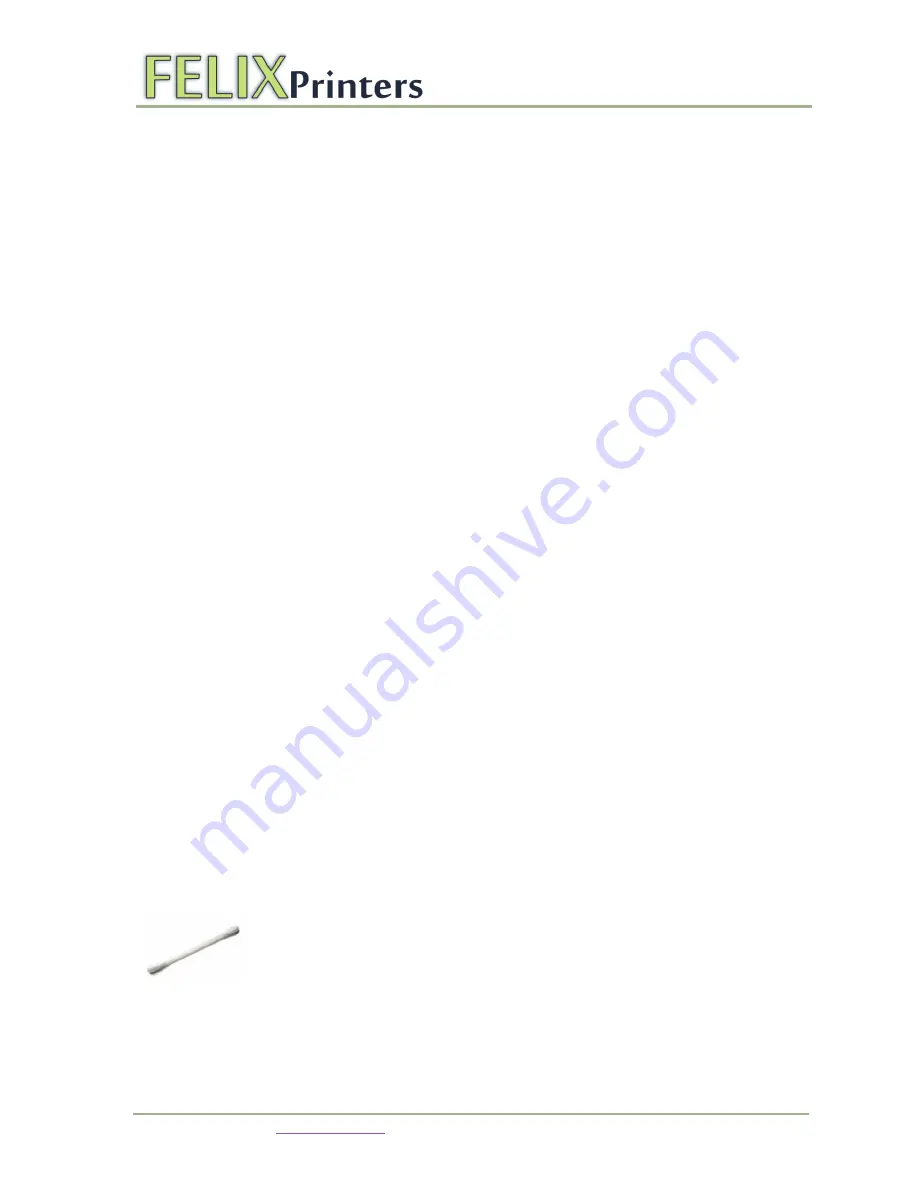
www.felixprinters.com
Page
55
of
65
15
Quest to high quality printing
After experimenting a little with the printer, you probably want to get the most out of your printer. This chapter addresses some
categories to increase print quality.
15.1
Thermodynamics
Filament printing temperature is an important parameter. There is usually one optimal temperature to print at, this is different for each
material type and even for different colors of the same material.
PLA prints somewhere between 180 to 210 degrees C.
ABS from 220 to 250 degrees.
This will happen when printing at too low temperature:
-
The printed parts will become brittle, because the printed layers do not stick very well.
-
Extruder needs a lot of force to push the filament through the nozzle. It can happen that at high print speeds, the force
demand could not be fulfilled, which result in skipped steps of the extruder motor.
When printing at too high temperatures:
-
You will experience ooze(little strings) of the filament.
-
You could hear bubbles pop, this can be evaporated water inside the filament.
-
Printing small prints will be difficult because when printing the next layer, the previous layer could still be soft.
TIP
: when printing very small objects try to print at low speed or try to print more at once, this gives to previous printed layers time to
cool down a bit.
Heated bed
The first layer which is in contact with the heated bed is the foundation of the printed part. You want to make sure that this first layer is
near perfection. Sometimes it can be troubling to get parts to stick to the bed, or parts can come loose at the edges after a while. This
can be because of the following:
-
Bed surface is not degreased enough.
-
Temperature of the heated bed is too low, try increasing it with 5 degrees
-
Bed is not level. Make sure the bed is perfectly level, especially for large prints it can be that the distance of the hot-end to
the bed is too much at one side of the print, when the bed is not level.
-
Print speed of first layer is too fast.
-
Hot-end temperature is too low. Try increasing it 5 degrees.
15.2
Mechanics
Bearings
.
To further fine-tune the smoothness of the bearings it is recommended to use Teflon/PTFE spray on the sliding bearings.
Spray a little bit of Teflon/spray on a Q-tip. And rub the rail where the drylin parts make contact with the rail.
Note 1: Other oils are not recommended by the manufacturer of the bearings.
Note 2: DO NOT spray it directly on the bearings, because it will make a mess and the chances are that the Teflon fluid will creep
underneath the tape, which is placed underneath the Drylin parts. The tape will then come off in time.











































